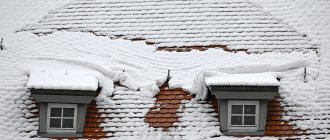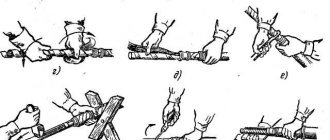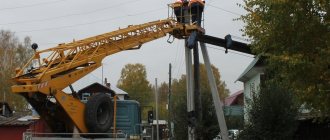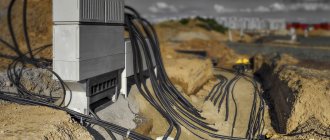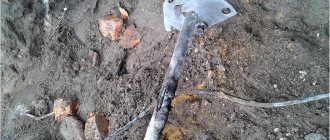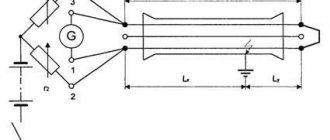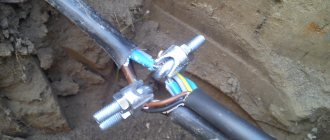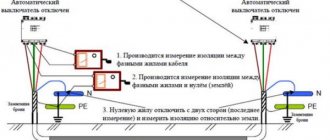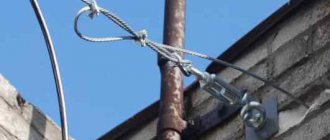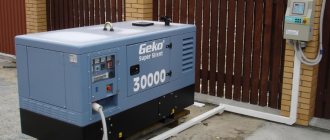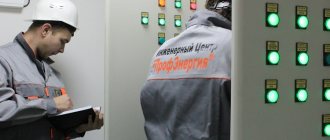End couplings
For these elements, which are used on paper-insulated cables, there is a name - 1KV(N)tp-3x150-240N. There are many additional characters in the name, each of which carries some information:
- “K” - end;
- “B” and “H” - indicate the type of installation (inside or outside);
- The “H” at the end indicates the presence of additional fasteners.
To designate connecting elements with an insulating layer of cross-linked polyethylene and polyvinyl chloride, the same rules apply, only the letter “K” is added.
Based on the design of the outer protective layer, the best cable is a product with an armored layer. Couplings that are used to connect such cables are designated by the letter “B”
This protective layer must have the same potential relative to the wire and ground. To ensure this possibility, all cable ends are connected to metal fragments of connecting elements using a special outlet.
To perform cable switching in networks with voltages from 6 to 10 thousand volts, the following couplings are used:
- lead;
- epoxy.
Lead coupling
Connecting elements made of epoxy resin are the most resistant to harmful factors. They can also be used as stop components in the insulating layer of cables with paper as the insulating material. To install them, it is necessary to make a metal case from two fragments, in which to carry out installation work. This coupling is supplied with the following:
- chamber with filler and resin;
- chamber with hardener;
- Additional materials.
This type of connecting parts is covered with a layer of fire-resistant material and is reliably protected from various types of influences using a metal case, the thickness of which is 0.5 centimeters.
Lead connectors are used to connect cables with aluminum or lead winding. They are made in the form of tubes with a diameter of 6 to 11 centimeters, and the length ranges from 45 to 65 centimeters.
When the installation of the coupling on the cable using the usual method is completed, the area on which there is no insulating layer left must be treated with heated MP-1 cable compound in order to get rid of water. Then the layer of “original” insulation should be restored. The lead connecting elements are also reliably protected by a metal casing.
Epoxy coupling
Stop couplings are included in the group of couplings. They are used when it is necessary to protect the insulating layer from melting due to temperature changes.
Types of couplings
Couplings are required to create power electrical networks for various applications, as well as to connect certain types of special electrical equipment to these networks. The devices consist of materials and several elements to create the connection of wires and electrical cables required by operating conditions. Also, with the help of couplings, highly reliable insulation and tightness of the connection can be achieved.
The coupling creates a tight and reliable connection of cables under high voltage
Couplings are divided into several types according to many parameters. In accordance with their purpose, couplings are produced:
- end;
- branching;
- locking;
- connecting;
- transitional.
According to the type of design, devices are divided into single- and three-phase. According to the type of materials used, couplings are divided into:
- heat shrink;
- made of lead;
- made of cast iron;
- epoxy;
- made of brass.
Depending on the type of electrical insulation used, devices can be:
Types of cable connectors
To make the right choice of connecting element, you need to look at these technical indicators of the product:
- number of wires in the cable;
- cross-sectional area, as well as the material used to make the veins;
- maximum network voltage;
- type of interphase insulation;
- protective equipment that increases the resistance of the cable from various types of influences.
Based on the value of the maximum voltage in the electrical network, connecting elements are manufactured for use in:
- high-voltage switching;
- electrical networks with voltages up to 1000 V.
Four-wire coupling
As a rule, the maximum number of wires connected by a coupling does not exceed four, however, in some cases there are connections with a large number of wires on one coupling.
To correctly install the coupling on the cable, you must cut the ends correctly, and then very carefully remove all the insulation. Then it will require carefully preparing all surfaces in turn for installation of the connecting element. From each end, it is necessary to completely cut off the insulation to half the length of the connecting element, into which both ends of the wire must then be inserted and firmly clamped with fasteners.
The same connection method is used to connect the wires to the terminal. In this case, it is necessary to dismantle the insulating layer; the entire length of the connecting part must be removed.
For wires with a large number of copper strands that are connected together, it is better to use tips made of materials that are easily deformed. These tips are compressed with a special tool at the last stage of connection. The result should be a mechanically strong one, as well as good electrical contact. For high-quality crimping, a force of several tons must be applied.
The design of the connecting elements used directly depends on the type of interphase insulation.
Interfacial insulation of coupling
Common mistakes in installing end couplings
Failure to maintain the required distance
In these parts, which are installed on high-voltage lines, special attention should be paid to the distance between the phases and grounding. Otherwise, a breakdown of the insulating layer may occur right inside the electrical panel.
In some cases, the dimensions of the shield do not allow this condition to be met, in which case it is necessary to purchase adapters.
Cross phase orientation
Under no circumstances should different wires be allowed to come into contact in the coupling. If this happens, field strength may subsequently arise. In order to be able to freely lay wires on top of one another, it is necessary to use a tube that equalizes the tension.
Tips with window for checking connection status
Outside the premises, it is prohibited to use tips that are made with a hole to inspect the condition of the core. There is a high probability that moisture will get into this hole, which can subsequently disrupt the switching, and also start the process of oxidation of metal elements, which will significantly reduce the quality of power transmission.
End couplings for external work
Installation of protective elements on the cores of outdoor couplings
The end product can be mounted in a vertical plane using a variety of methods, but its protective element must always prevent water from penetrating into the connection, and not vice versa
It is also very important to prevent contact of the protective elements
Air masses in the housing
The presence of air in the coupling triggers the formation of ions in a gaseous environment, which will ultimately lead to significant damage to the coupling. This is why it is necessary to use a sealant.
